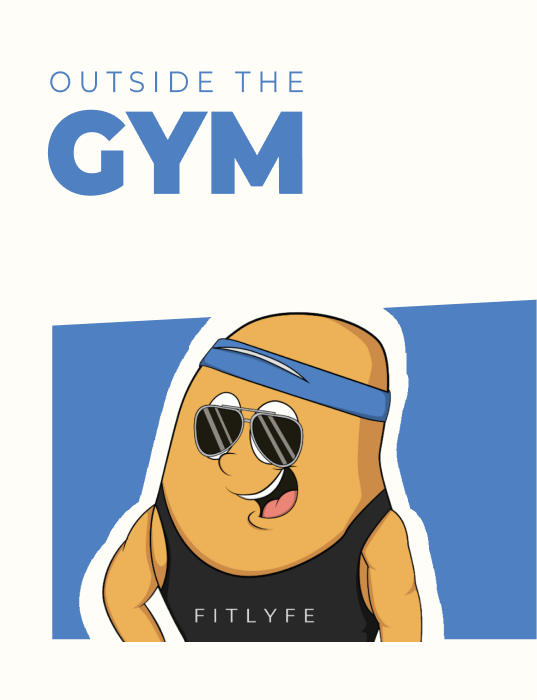Are You Earning Up to Your Potential?
Most personal trainers are undervaluing their time and skills. Our Personal trainer Revenue Calculator helps you find out what you should be making, and how to get there.
No guesswork. Just real numbers.
.jpg)
As a certified personal trainer yourself, your expertise lies in designing workout programs that are effective and tailored to your client's specific fitness goals. This comprehensive guide will delve into the intricacies of creating highly efficient workout plans for individuals with different objectives. Whether your clients aim to lose weight, build muscle, enhance cardiovascular endurance, or improve overall fitness, this blog will equip you with the knowledge and tools to design personalized training programs that maximize results.
Throughout this guide, we will explore the key components of effective workout program design, providing actionable insights and practical examples. We will discuss the importance of understanding your client's fitness goals to create programs that align with their aspirations. Additionally, we will emphasize the significance of assessing your client's fitness level, as this is a foundation for tailoring workouts to their specific needs and capabilities.
1. Understand Your Client’s Fitness Goals:

Understanding your client's fitness goal is crucial in designing an effective workout plan. It requires active listening and engaging in a comprehensive consultation to understand what they hope to achieve clearly. By asking relevant questions and attentively listening to their responses, you can gather valuable insights into their expectations and aspirations.
It is important to clarify and set realistic expectations, helping them understand what can be achieved within a given timeframe and addressing any potential challenges they may face. Encouraging clients to define long-term and short-term goals provides a comprehensive perspective and creates a sense of progress.
Additionally, understanding the underlying motivations behind their goals helps forge a meaningful connection and allows you to tailor the program to their unique needs. By documenting and regularly reviewing these goals, you ensure alignment and can assess the program's effectiveness.
By understanding your client's fitness goals, you ultimately establish a solid foundation for designing a personalized workout plan and program that meets their aspirations, fosters trust, and leads to greater success and satisfaction.
💪 Got an idea for a brand? Let's bring it to life.
Launch your own fitness app with FitBudd in minutes!

💪 Got your brand name? Let’s bring it to life.
Launch your own fitness app with FitBudd in minutes!


88% trainers worldwide gave us 5 stars
Transform your fitness business with the power of your branded app on iOS and Android.
Try for FREE2. Assess Your Client’s Current Fitness Level:

Comprehensively assess your client's fitness level before developing a full workout routine or program. This evaluation provides a baseline for tracking progress and making appropriate adjustments. Consider the following assessments:
- Strength Tests: Evaluate client's strength levels by measuring their ability to perform exercises like bench presses, squats, or deadlifts. This helps you determine their starting point and set appropriate goals.
- Cardiovascular Endurance Tests: Assess client's cardiovascular health and fitness through tests like timed runs, cycling challenges, or step-ups. This information helps you design workouts that improve endurance effectively.
- Flexibility Assessments: Evaluate client's flexibility using tests such as the sit-and-reach or shoulder mobility assessments. This helps you identify any limitations and incorporate appropriate flexibility exercises.
- Body Composition Measurements: Use body fat calipers, bioelectrical impedance analysis, or circumference measurements to assess client's body composition. This information provides insights into their weight, fat loss, or muscle gain progress.
3. Select Appropriate Training Methods:

Selecting appropriate training methods is crucial to designing an effective workout plan for your clients. Different fitness goals require specific approaches to training. You can optimize their progress and maximize results by tailoring the training methods to align with your client's objectives. Here's a detailed explanation of this point:
1. Identify the Specific Fitness Goals: Identify your client's fitness goals. For example, suppose their goal is weight loss. In that case, their training program will have a different emphasis than someone aiming to burn fat, build muscle or improve cardiovascular endurance. Understanding the specific goals will guide your selection of training methods.
2. Cardiovascular Training: Exercises improve cardiovascular endurance, burn calories, and support weight loss. Choose appropriate cardiovascular exercise activities such as running, cycling, swimming, rowing, or using cardio machines like treadmills or ellipticals, depending on your client's goals and preferences. Consider the intensity, duration, and frequency of cardio workouts based on their fitness level and any potential limitations.
3. Resistance Training: Resistance training is essential for building strength, increasing muscle mass, and enhancing overall fitness. Incorporate exercises that target major muscle groups, such as squats, deadlifts, bench presses, lunges, and rows. Customize your workout schedule and the intensity, volume, and frequency of resistance training based on your client's goals and fitness levels. Adjust the amount of weight, number of repetitions, and sets to ensure proper challenge and progression.

4. Functional Training: Functional training focuses on movements that mimic real-life activities, improving overall functionality and performance. It can benefit clients who aim to enhance athletic performance or daily activities. Include exercises that engage multiple muscle groups simultaneously, such as kettlebell swings, medicine ball throws, or full body-weight movements like push-ups and burpees. Functional training can help improve stability, balance, coordination, and core strength.
5. Flexibility and Mobility Training: Flexibility and mobility exercises are essential for maintaining muscle-building joint health, preventing injuries, and optimizing performance. Include stretches and mobility exercises targeting major muscle groups and joints. Examples include static stretches, dynamic stretches, yoga poses, and foam rolling. Assess your client's flexibility and mobility and design a program that addresses their needs.
6. Interval Training: Interval training involves alternating between high-intensity and low-intensity periods of exercise with rest intervals. It can improve cardiovascular fitness, increase calorie burn, build muscle, and boost metabolism. Incorporate techniques like high-intensity interval training (HIIT) or Tabata training into your client's programs, adjusting the work-to-rest ratios based on their fitness level and goals.
7. Progressive Overload: Regardless of the specific training methods you choose, incorporating the principle of progressive overload is essential. This principle involves gradually increasing the demands placed on the body over time to stimulate continuous adaptation, muscle growth, and progress. You can apply progressive overload by progressively increasing the intensity, volume, or complexity of exercises, such as increasing weights, adding repetitions or sets, or introducing more challenging variations.
It's important to remember that selecting appropriate training methods is not limited to a single approach. You can combine different training modalities and techniques to create a well-rounded program that addresses multiple aspects of your client's fitness goals. Consider their preferences, fitness level, and any limitations or contraindications when determining the optimal mix of training methods.
4. Structure the Workout Program:

Once you've determined the appropriate training methods, structure the workout plan to maximize results and maintain client motivation. Consider the following elements:
1.Frequency body workouts: Determine the number of weekly training sessions based on client's availability and commitment level. Aim for a balance between consistency and allowing for sufficient rest and recovery. For example, three to five sessions per week may be suitable.
2.Duration: Design workouts that fit within client's time constraints. Typically, sessions, including warm-up, cool-down, and rest periods, should last around 45 minutes to an hour. Adjust session length based on individual needs.
3.Warm-up and Cool-down: Begin each session with a dynamic warm-up to prepare the upper and lower body well for exercise. Incorporate mobility exercises, light cardio, and dynamic stretches to increase heart rate, loosen muscles, and improve joint mobility. For example- pull-ups, arm swings, hip circles push-ups, etc. At the end of the workout, include a cool-down period incorporating static stretching and relaxation techniques to promote recovery and reduce muscle soreness.

4.Exercise Selection: Select exercises that align with the client's goals and target specific muscle groups or fitness components. For example, a weight loss program may include cardiovascular exercises (e.g., jogging, cycling) and resistance exercises (e.g., lunges, push-ups). Consider client's fitness level, any limitations or injuries they may have, and their preferences to keep them engaged.
5.Progression: Gradually increase the workouts' intensity, volume, or difficulty as clients progress. This ensures ongoing challenge and prevents stagnation. Examples of progression include adding more weight, increasing the number of repetitions or sets, or introducing more advanced exercises or training techniques into the same workout (e.g., supersets or drop sets).
5. Monitor Progress and Adapt:

Regularly monitor client's progress to assess the program's effectiveness and make necessary adaptations. Track key metrics such as strength gains, weight loss, improvements in endurance, or changes in body composition. This data will provide valuable insights to inform your decisions and adjust the program as needed.
Pay attention to individual muscle groups and their development when analyzing the progress. You can track specific improvements and make targeted adjustments by focusing on one muscle group at a time. For example, if a client's goal is to build strength and muscle in their upper body, closely monitor metrics related to exercises like bench presses, rows, or shoulder presses. Track increases in weight lifted, repetitions performed, or improvements in muscular endurance.
6. Consider Individual Factors:

Recognize that each client is unique, and their program should consider individual factors such as age, fitness level, medical history, and preferences. Tailor exercises, intensity, and progressions accordingly. Be attentive to their feedback and adjust to ensure their comfort and satisfaction. For example, if a client has a knee injury, modify exercises to reduce the impact or focus on strengthening the surrounding muscles.
Conclusion:
As a personal trainer, designing effective workout plans for clients is crucial for helping them achieve their fitness goals. By understanding their objectives, assessing their current fitness level, selecting appropriate training methods, structuring the program effectively, monitoring progress, and considering individual factors, you can create personalized plans that maximize results and ensure client success. Your expertise and dedication will empower your clients to reach new fitness levels and transform their lives.
Frequently Asked Questions

Ultimate Marketing Guide for Fitness Trainers
Boost your business growth with these tried and tested marketing strategies. Free for you to download.
Download Now
Templates
These functional templates have the power to make any fitness trainer's life easier.
Subscribe To
Our Blog




























